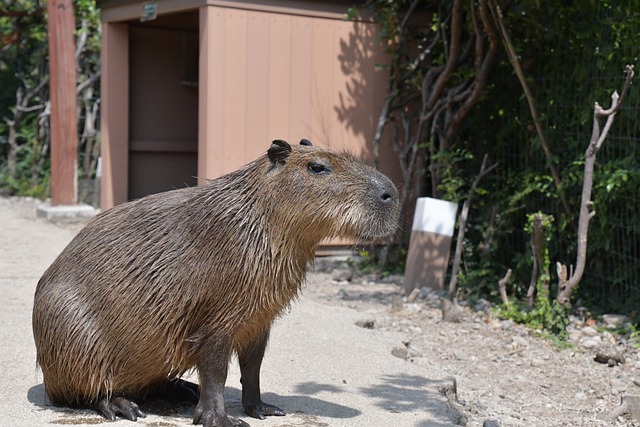There is a lot of debate over whether or not Catsan can be used for rats. Some people swear by it, while others say it is a waste of money. So, what is the truth? Can Catsan be used for rat cages? This blog post will look at the evidence and see what the science says.
Can you use Catsan litter in my rat’s cage?
No. Catsan Litter should not be used for rats. Here why.
Catsan is a litter made from clay commonly used in cat litter boxes. The clay is formed into small pellets that are absorbent and help to control odors.
However, Catsan should not be used in a rat’s cage for several reasons.
- First, the pellets are too large and can pose a choking hazard.
- Second, the clay can become stuck to your rat’s fur, leading to skin irritation.
- Finally, the litter may contain chemicals that are harmful to rats. As a result, it is essential to use a different type of litter when setting up a rat’s cage.
Many specially-formulated litters on the market are specifically designed for small animals and will not present the same risks as Catsan.
What is Catsan litter, and what are its ingredients
Catsan is a brand of clumping cat litter that is made from bentonite, a type of clay. The clay is mixed with water to create a slurry, which is poured into molds and left to harden.
Once the clay has hardened, it is crushed into small pieces and screened to create the final product.
Catsan litter is available in clumping and non-clumping varieties and can be used with any litter box. Bentonite clay is the main ingredient in Catsan litter. This type of clay is naturally absorbent and creates a clump when it comes into contact with moisture.
In addition, bentonite clay is non-toxic and does not produce dust, making it safe for humans and animals.
Is there any cat litter I can use in my rat’s cage?
While there are many types of cat litter on the market, not all of them are safe for use with rats. For example, some litters contain chemicals or fragrances that can harm rats, and others may be made from materials that rats can quickly ingest.
As a result, it’s essential to choose a rat-safe litter when setting up your rat’s cage. One option is to use recycled paper pellets made from100% natural ingredients and entirely safe for rats.
Another option is to use kiln-dried sand, which is also safe for rats and helps to absorb odors. Whichever type of litter you choose, avoid any products containing harmful chemicals or fragrances.
What are the safest and most efficient types of litter for my rat cage?
1. Paper-based litters are safe and efficient for rat cages.
There are a few different types of rat litter on the market, but paper-based products are the safest and most efficient option.
Unlike clay or wood-based litter, paper products don’t contain any harmful chemicals or particles that could potentially injure your rat.
And because the paper is such an absorbent material, it helps to keep your rat’s cage clean and dry – which is extremely important for their overall health and happiness.
Plus, paper-based litters are usually very affordable, so you can easily find a product that fits your budget.
Paper-based products are the way to go if you’re looking for safe and efficient litter for your rat’s cage.
2. Clumping litters are safe and efficient for rat cages.
Clumping litters offer several advantages over traditional litter.
For one, they are much more efficient in terms of absorbency. This means that they can help to reduce odors and keep your rat cage cleaner for longer.
Additionally, clumping litters are safer for rats to ingest, as they are less likely to cause gastrointestinal blockages. Finally, clumping litters are easier to clean out of the cage, as you can remove the clumps and leave the rest of the litter in place.
As a result, clumping litters are an ideal choice for anyone looking for a safe and efficient way to litter their rat cage.
3. Natural litters are safe and efficient for rat cages.
Regarding rat cages, several different litter materials can be used. Some people prefer synthetic materials such as recycled paper or pellets, while others prefer natural materials such as wood shavings or straws.
Both types of bedding have several advantages and disadvantages, but many experts believe that natural litter is the safest and most efficient option.
Unlike synthetic materials, natural litter is biodegradable and will not release harmful chemicals into the environment.
Additionally, it is absorbent and will help to keep the cage clean and dry. Natural litter is also relatively inexpensive, making it an excellent choice for those on a budget.
Overall, natural litter is an excellent option for rat cages and will help to keep your pet healthy and happy.
4. Corncob litters are safe and efficient for rat cages.
Corncob litters are a popular choice for rat cages for several reasons.
- First, they are relatively inexpensive and easy to find.
- Second, they are absorbent and help to control odor.
- Third, they are dust-free and easy to clean.
However, there are a few things to remember when using corncob litter.
- First, it is essential to avoid litter treated with chemicals or perfumes.
- Second, it is essential to change the litter regularly to prevent the build-up of ammonia and other toxins.
- Third, providing your rats with plenty of toys and chewable toys is essential to prevent them from eating the litter.
Corncob litter can be a safe and efficient way to keep your rat cage clean and tidy.
5. Pine shavings are safe and efficient for rat cages.
Though there are many bedding materials on the market for rats, pine shavings remain a popular choice among owners due to their low cost and high absorbency.
However, some owners worry that pine shavings may be unsafe for their pets. On the contrary, pine shavings are perfectly safe for rats when used in moderation.
Pine shavings are an efficient way to absorb urine and keep the cage clean.
A layer of soft fabric or shredded paper should be added to the shavings to provide a comfortable surface for the rats to sleep on.
Conclusion
Conclusion: No Catsan litter should not be used for my rat cage. Better litter on the market will provide a cleaner and safer environment for rats.









Leave a Reply
You must be logged in to post a comment.